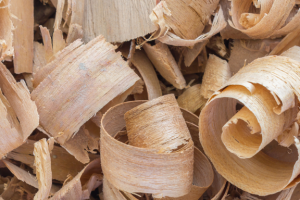Unsurprisingly, given the runaway global demand for sawnwood in particular, international log prices have lifted for the most part since the onset of the global pandemic.
It seems that in an economic crisis, the go to is the housing economy, where every dollar invested by a Government has a pretty immediate and stimulatory effect. That is certainly the Australian experience and seems to be a trend observed and followed by others also.
Of course, this is not a timber experience alone. All building materials have seen price rises of varying magnitudes, but few have been as prominent in the public imagination as timber pricing, which of course flows back upstream to log pricing.
Starting regionally, we can observe that New Zealand’s log export prices really shot up from the September quarter of 2020, after bouncing around at more modest levels for a year or more prior.

Pruned log prices were 12.5% higher at NZDFob216/JAS in JQ’21, compared with a year earlier, while the A Grade logs were up 19% to NZDFob182/JAS and K Grade a very strong 22% to NZDFob172/JAS.
There can be some speculation that the New Zealand log export experience was all the stronger because of the Chinese ban on imports from Australia. Certainly, as the chart here shows, the New Zealand export log harvest explosion coincided with the ban and the increase appears to approximate the size of the previous Australian export profile to China.

Shifting across the Pacific to the US and Canadian West Coast, price increases are observable and albeit on different timeframes, had exploded in some markets, especially through to the year-ended June.
Delivered Canadian hemlock sawlogs were up 29.2% year-ended June to USD63/m3, while their pine counterparts lifted an eye-watering 48% to USD59/m3. Year-ended September – where the September quarter seems to be displaying more modest price hikes after the stellar prior year – Washington State Douglas Fir logs were 10.7% higher at USD115/m3 and the average for the White Wood grades was up 9.1% to USD93/m3.

The US South shows some different price movements, depending on how the data is considered. The first chart shows US South sawlogs with year-ended June Pine prices up just 3.6% to USD45/m3, Oak up 1.8% to USD62/m3 and Mixed Hardwoods down 1.5% to USD50/m3.

That data contrasts with latest information from Forest2Market that shows the Weighted Average price of all Southern timber (measured in tons) was at a fourteen year high in the September quarter, as the chart here shows. Further details are available here.

Finally, we spin across the Atlantic to examine the latest data for the Baltic region, where the different market structures continues to display some radically different pricing. The obvious point in the charts that follow is the Estonian log market is clearly more openly traded and internationalised than the other main markets where supply is more likely to be contracted and integrated.
Starting with roadside Pine, we can see that for the year-ended September, Estonian pine was 67% higher priced at USD129/m3, while for Sweden it was a 9.7% increase (USD57/m3), Finland 11.6% (USD76/m3) and Norway 37.0% (USD66/m3).

Switching speeds to the Spruce log market, Estonian prices were up an incredible 80.7% year-ended September, lifting to an all-time and unsustainable high of USD116/m3, with Sweden up 18.2% (USD62/m3), Finland up 10.4% (USD62/m3) and Norway 42.2% (USD69/m3).
The summary of the global log wrap is that despite different units of measure, some slightly varied ‘points in time’ and other factors like different species and market structures, logs are significantly more valuable than was the case one year ago. Can the market sustain the increases? Perhaps not all, but just as likely, perhaps some can be sustained into the future.



